introduction
Avionics are inevitably subject to vibration and shock during production, transportation and use. The effects of these vibrations and shocks can cause various forms of failure or even destruction of electronic devices. The damage of the electronic equipment caused by these vibrations and shocks is the loosening of the screw and the nut, the deformation of the chassis, the breakage of the PCB solder joint, the breakage of the device pins, and the like. Especially with the continuous development of high precision, high density, small pitch, multi-layer, high-speed transmission and the rapid development of large-scale integrated circuits (VLSI), its functions are more complete, smaller, and the package leads are more. The emergence of more and more dense ICs and SOICs, especially the widespread use of surface mount technology (SMT), poses even greater challenges for PCB components.
For avionics, vibration and shock-induced failures can greatly reduce their reliability and have extremely serious consequences. Relevant literature shows that the failure rate caused by aero-electronic products due to vibration and impact dynamics accounts for 28.7% of the total failure rate. In the vibration environment test of avionics equipment, PCBs also occur frequently. Through the dynamic analysis and design of the PCB components, the probability of failure in environmental tests can be effectively reduced, and the reliability and quality of avionics products can be improved.
Kinetic analysis is based on dynamic analysis. Dynamics models can be built by analyzing the dynamic characteristics of PCB components. An effective dynamic analysis can be performed only if an accurate dynamic model is established. To this end, this paper attempts to analyze the dynamic characteristics of a avionics PCB component (shown in Figure 1) using a combination of finite element analysis (FEA) and experimental modal analysis (EMA). Finite element dynamics analysis model of PCB components.
1 finite element modal analysis
As a mature numerical analysis technology, finite element analysis (FEA) is widely used in the analysis of dynamic characteristics of electronic equipment PCB components. And, FEA can help engineers design more reliable PCB assemblies that predict potential failures and fatigue at the beginning of the design. This paper takes the PCB component of an avionics (Fig. 1) as the research object. Its dimensions (length & TImes; width & TImes; thickness) are 133.5mm & TImes; 79mm & TImes; 1.8mm, which are fixed to the electronic equipment through the four corners of the PCB. On the case. The PCB assembly is similar in size and mounting to the standard test PCB specified, but with a larger thickness. Components and connectors are assembled with surface mount technology (SMT) and PCB. The components are packaged primarily in BGA, QFP and SOP.
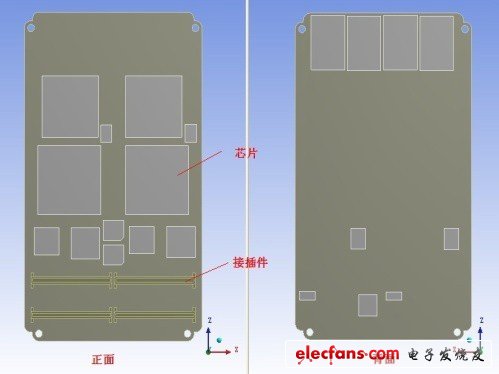
Figure 1 Object PCB component
1.1 Finite Element Analysis Model
The physical property parameters of the materials that make up the various parts of the object PCB assembly are shown in Table 1. Based on the PCB component geometry information and related material information, a finite element analysis model was established in ANSYS (Figure 2). Since the dynamic performance data exhibited by the PCB assembly as a whole is not the detailed data of the component itself, the components and connectors are simplified when the model is built. Specifically, rectangular and square blocks are used to simulate components, and the connectors are modeled with their approximate shape. The finite element analysis model uses three-dimensional solid elements (SOLID187) for meshing (using solid elements for meshing, although the calculation amount is increased to some extent, but the workload from CAD to CAE is greatly increased. Reduced, is conducive to engineering applications), and the connection between components and PCB, connectors and PCB are simulated by multi-point constraint (MPC). At the same time, since the rigidity of the electronic casing is much larger than the rigidity of the PCB assembly, a fixed support constraint is applied at the screw holes at the four corners in the finite element model to simulate the screw connection of the PCB assembly to the equipment casing.
Table 1 Physical properties of the material of each component of the PCB

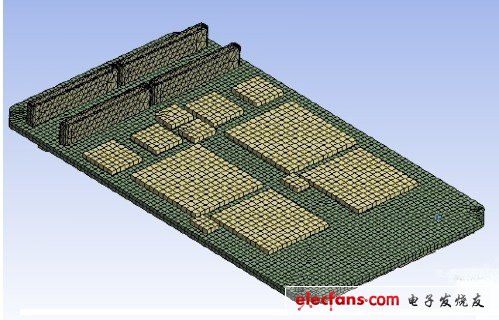
Figure 2 Finite element model of the object PCB component
1.2 Finite element modal analysis results
The finite element model of the object PCB assembly was established and the modal analysis was performed using the Block Lanczos Method. The modal analysis is to solve the characteristic equation of the system. The characteristic equation of the general multi-degree-of-freedom system can be in the form shown in equation (1) to obtain the eigenvalues ​​and eigenvectors of the system, that is, the natural frequency and mode shape of the vibration system.
![]()
In the formula, the mass matrix of the [M]-system is assembled from the element mass matrix in the finite element modal analysis; the stiffness matrix of the [K]-system is assembled from the element stiffness matrix in the finite element modal analysis; X}—the displacement vector of the system; the eigenvalue of the ω-system.
Through the modal analysis, the first three natural frequencies and vibration modes of the object PCB assembly fixed by four screws are obtained, as shown in Table 2. The first-order mode of the PCB assembly is first-order bending, the second-order mode is torsion, and the third-order mode is sinusoidal. These modes are similar to the four screws that are secured to the JEDEC standard board.
Table 2 finite element modal analysis results

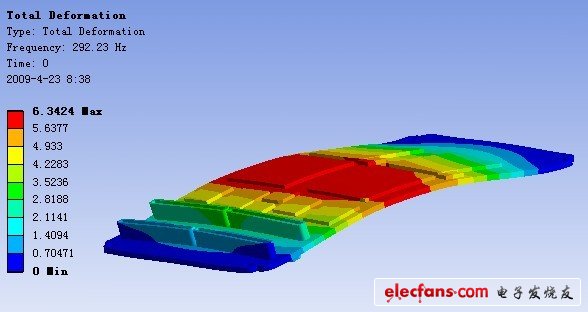
Figure 3 PCB component 1st mode (FEA)
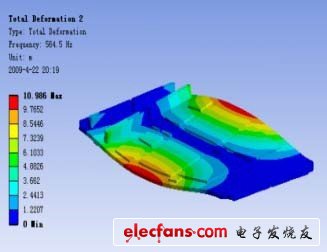
Figure 4 PCB component 2nd mode (FEA)
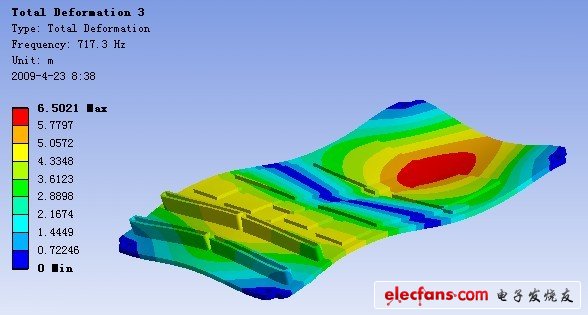
Figure 5 PCB component 3rd mode (FEA)
Optical Rotary Sensor,Custom Encoder,Optical Encoder 6Mm Shaft,Handwheel Pulse Generator
Jilin Lander Intelligent Technology Co., Ltd , https://www.jllandertech.com